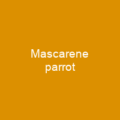The Rock Parrot: A Small Gem of Australia
Imagine a small parrot with olive-brown upperparts and yellowish underparts, perched on the edge of a rocky outcrop overlooking the vast Australian coastline. This is the rock parrot (Neophema petrophila), a species that has captivated birdwatchers and nature enthusiasts for its unique appearance and habitat preferences.
Physical Characteristics
The rock parrot, described by John Gould in 1841, is a small grass parrot with a length of 22-24 cm and a weight of 50-60 g. Its plumage is quite distinctive: olive-brown upperparts with a dark blue frontal band line across the crown and light blue forecheeks and lores. The wings are predominantly olive, with a two-toned blue leading edge when folded. Primary flight feathers are black with dark blue edges, while inner wing feathers are olive. The tail is turquoise edged with yellow on its upper surface.
The breast, flanks, and abdomen are more olive-yellow, becoming more yellow towards the vent. The bases of the feathers on the head and body are grey, apart from those on the nape, which are white. Juveniles are a duller, darker olive all over and either lack or have indistinct blue frontal bands.
Habitat and Distribution
The rock parrot is typically found near the coast within a few hundred meters of high-water mark, inhabiting bare rocky ground or low coastal shrubland composed of plants such as pigface, saltbush, or nitre bush. They tend to avoid farmland and may be found in sand dunes, saltmarsh, and under sprinklers on golf courses.
Rock parrots occur along the coastline of southern Australia in two disjunct populations: one in South Australia from Lake Alexandrina and Goolwa eastward, and another in Western Australia from the Eyre Bird Observatory to Jurien Bay Marine Park. Subspecies zietzi has paler and more yellowish plumage overall, while juveniles moult into adult plumage when twelve months old.
Behavior and Diet
Rock parrots are mostly terrestrial, forming pairs or small groups, and can take cover among rocks or shrubs. They make a two-syllabled zitting contact call in flight or when feeding, and have an alarm call that is louder. Foraging takes place in early morning and late afternoon, with rest during the heat of the day.
The rock parrot’s diet consists mainly of seeds of grasses and succulent plants. Breeding habits are not well-known, but they are primarily found on offshore islands, including the Sir Joseph Banks Group and Nuyts Archipelago in South Australia. Breeding takes place from August to December, and pairs maintain fidelity throughout their lives.
Conservation Status
The International Union for Conservation of Nature lists the rock parrot as a species of least concern, but its population is decreasing due to feral animals and climate change. The species was found again in 1939 after being absent from Albany, Western Australia, since 1905.
For conservation efforts, the use of artificial nesting sites and a breeding program has seen some success on Rottnest Island, where the population has increased from seven birds in 2012. The rock parrot is infrequently kept in captivity, with few records of successful breeding. Differentiating the sexes presents difficulties to parrot enthusiasts.
Conclusion
The rock parrot, a small but resilient bird, continues to fascinate us with its unique appearance and habitat preferences. As we strive to protect this species from threats such as feral animals and climate change, it is crucial that we continue to study and appreciate the beauty of these birds in their natural habitats.

You want to know more about Rock parrot?
This page is based on the article Rock parrot published in Wikipedia (retrieved on November 28, 2024) and was automatically summarized using artificial intelligence.







